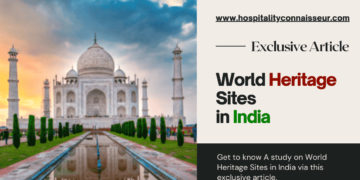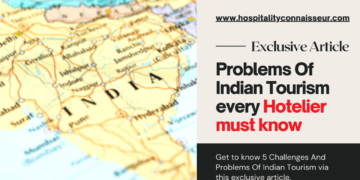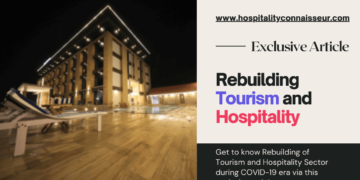“MONGOLIA”
An ancient country stretching between heterogeneous climate.
Official Name: Mongolia.
Location: East West Asia.
Total Area: 1.566 million km².
Total Population: 3.2 million.
Capital City: Ulaanbaatar.
Famous Cities: Darkhan, Erdenet, Murun & Khovd.
Official Language: Mongolian.
Religion: Buddhism.
PREVIEW
Mongolia is an ancient country. Its borders are bounded by Russia in the north and China in the south east and west. The newly formed Kazakhstan country is only 24 miles from the western end of Mongolia. Mongolia’s Upper Flat region is a large area located in Central Asia.
Both Inner Mongolia occupied by China and Independent Mongolia, are home to the vast plains of Gobi desert and steppe grass. Its height ranges from 900 to 1500 meters. The majority of Mongolia is flat and desert, with a very low population. Here is chilled atmosphere and frosty breeze that blows through the winter. The region also recorded a temperature of -40 degrees Celsius. As the capital city of Ulaanbaatar has an average annual temperature of 0 degree and it is considered to be the coldest capital in the world.
The summers here are short and winter is terribly long and the average rainfall is only about 20 inches. The Mongolian people know how to live amidst such challenges of nature.
HISTORY
Mongolia has been under the rule of Xiongnu, Xianbei, Rouran and some other kingdoms in ancient times. The Mongol Empire was founded in 1206 by Genghis Khan. Before this, the Mongol tribe living in Central Asia and in East Asia as lost and wandered.
Genghis Khan instilled goodwill spirit for working together in skillful tribes of hunting, archery and horseback riding. Mongolia is known to be influenced by Tibet’s Buddhism in the 16th and 17th centuries. By the end of the 17th century, the King Dynasty was ruling on the most parts of Mongolia. With the fall of the King Dynasty in 1911, the country was spontaneously liberated. But they had to struggle until 1945 to gain international recognition.
Under the influence of Russia, Mongolian People’s of Revolution; Party continued unilateral communist rule until 1990. Russia’s own collapse and the Communist regime of Eastern Europe in 1989 also resulted in a quiet & successful revolution against Communist rule in Mongolia.
In 1992, the implementation of a multilateral governance system brought reforms in the constitution of Mongolia.
ECONOMY
After the liberation of the communist regime, economic liberalization was introduced into the country and The government is also working hard to get the benefit to the poor. 35 to 40 percent of the population lives in the old fashioned lifestyle. More than 50 percent of people have a daily income of just $ 1 to $ 1.50. Since the climate here is not conducive to agriculture the Animals like horses, camels, cows, oxen and sheep are the true property of the country. As the spring water is found in the valleys of the northern part, The crops like wheat, barley and vegetables can be grown.
The country has coal, iron, copper, lead, gold and silver mines. The eyes of many countries around the world have fallen on its mines and the Chinese, Russian, Canadian, etc., have become a giant in the mining business. About 3000 mining licenses have been issued and Mongolia accounts for 80 percent of its export minerals. In terms of market capitalization, Ulaanbaatar is the smallest stock exchange in the world.
CUISINE
‘Airag’ (fermented mare’s milk) is a traditional drink of Mongolian people. Which is made from the milk of the mare. It is stored in leather or plastic containers to make it freeze as It produces acetic and alcoholic support due to its chemical process. In a long winter’s deadly cold, The fat-rich and protein-rich Airag brings heat to the Body.
Mongolians are also known for their Hospitality. Entering as a guest in Mongolian tents means, as we serve Tea here, similarly this beverage ‘Airga’ is served there. If you do not want to drink this, it is customary to return with a slight touch at lip or throw a dipped finger to the sky.
Mongolians use Cheese, Steamed milk and Yogurt, freely in everyday meal. You can also see snakes moving around in traditional Mongolian homes. From May to September, the weather is warm. There is a rule to hold or eat food with the Right hand only and they won’t mind if you just take help of your left hand for the preparation. Mongolians also drink sweet tea.
The use of meat from horses, camels, sheep and goats is quite common. As meat is eaten daily, it can also be eaten by boiling. Meat is made delicious when there is a special occasion. Russia also seems to have little influence in Mongolian cooking. Especially wealthy people are fond of Russian vodka.
CUSTOMS
‘Naadam’ is the main festival of Mongolia, which is celebrated for centuries. In which archery, horseback riding and wrestling are played.
In celebration of the middle of the summer, the girls also participate in archery and horseback riding. But men are only allowed take part in Mongolian wrestling. Revolving and tough people live with specific traditions from generation to generation. The door to the house in Mongolia is on the south side. On the north side are engraved images of God and family photos.
On the west side, the man, who is considered to be the head of the house, resides there. A drink made from mare milk is placed here on a wooden stand. On the east side there is the kitchen system for women. Primus or stove smoke is passed through the rooftop.
Men and women wear long gowns here. The gown has a strap to the left of the button. Men also wrap scarf made from wool around the waist. Believers go to the local Buddhist temple and pray. New Year’s start means new clothes and celebration.
Mongolia believes in preserving its ancestral heritage and its traditions. It is very common to have a family chart. After 1925 the Communist government banned the keeping of tribal and family documents. After 1996, the records of the tribe’s name, father’s name, etc. are considered official documents.
This is Mongolia. The land of Nature, Belief, Hospitality and most importantly Strength against all odds.




























